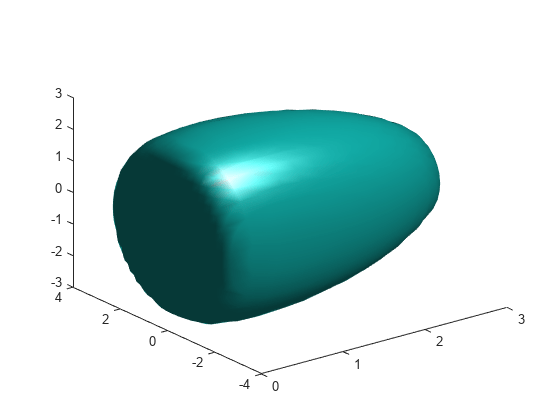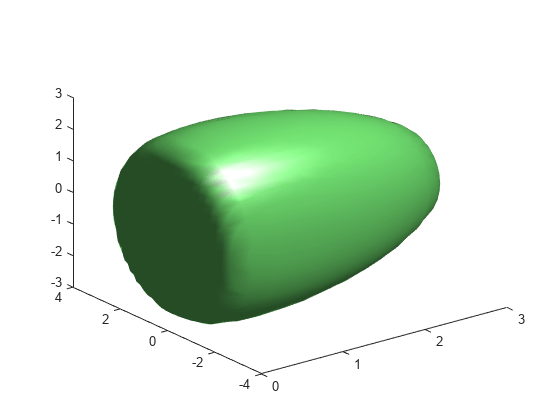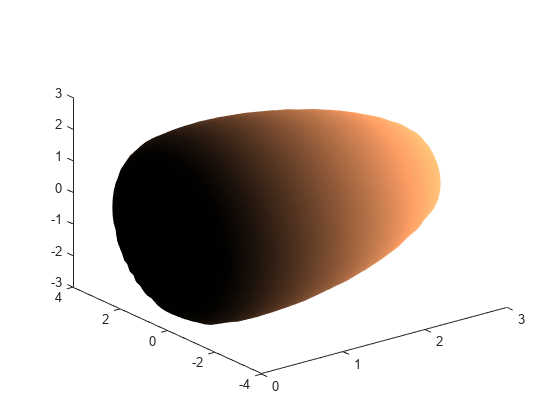isosurface
볼륨 데이터에서 등가곡면 데이터 추출
구문
설명
등가곡면은 3차원 데이터 분포와 동일한 값으로 이루어진 점들을 3차원 곡면으로 표현한 것입니다. isosurface 함수는 공간 볼륨 내의 상수 값의 점들을 연결하여 곡면을 계산하고 그립니다.
등가곡면 플로팅
예제
입력 인수
출력 인수
팁
사용자 지정 카메라 뷰, 조명 또는 곡면의 다른 컬러맵을 지정하려면
patch함수를 사용하여isosurface에서 반환되는 데이터를 플로팅합니다.isosurface로 생성된 구조체를patch명령에 직접 전달할 수 있습니다. 예를 들어, 다음과 같이 합니다.s = isosurface(X,Y,Z,V,isovalue); patch(s)
또는, 속성 이름을 지정하여 개별 면과 꼭짓점 배열을 patch에 전달할 수 있습니다. 예를 들어, 다음과 같이 합니다.
[faces,verts] = isosurface(X,Y,Z,V,isovalue) ; patch('Faces',faces,'Vertices',verts);
확장 기능
버전 내역
R2006a 이전에 개발됨


